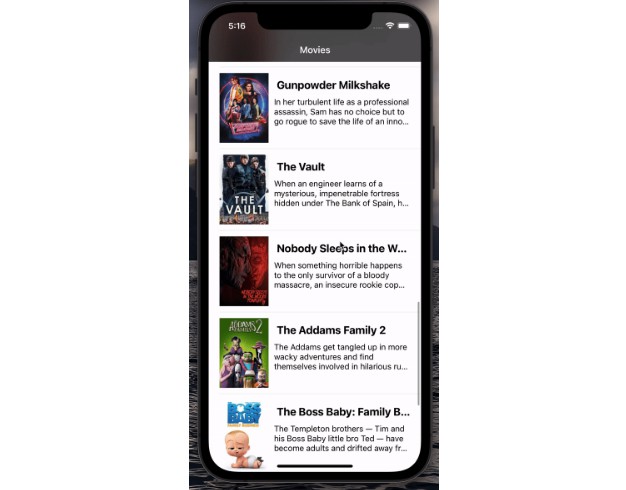SwiftRegressor
A linear regression tool that’s flexible and easy to use.
Available as an open source Swift library to be incorporated in other apps.
SwiftRegressor is part of the OpenAlloc family of open source Swift software tools.
Regressor
let points: [BaseRegressor<Double>.Point] = [
Point(x: 0, y: 0),
Point(x: 1, y: 1),
Point(x: 2, y: 4),
Point(x: 3, y: 9),
Point(x: 4, y: 16),
Point(x: 5, y: 25),
Point(x: 6, y: 36),
]
let lr = LinearRegressor(points: points)
print(String(format: "Intercept: %.1f", lr.intercept))
=> "Intercept: -5.0"
print(String(format: "Slope: %.1f", lr.slope))
=> "Slope: 6.0"
print(String(format: "y @ x=4.5: %.1f", lr.yRegression(x: 4.5)))
=> "y @ x=4.5: 22.0"
print(String(format: "x @ y=30: %.1f", lr.xEstimate(y: 30)!))
=> "x @ y=30: 5.8"
print(String(format: "r^2: %.3f", lr.rSquared))
=> "r^2: 0.923"
Types
The Point type is declared within BaseRegressor, where T is your BinaryFloatingPoint data type:
public struct Point: Equatable {
public let x, y: T
public init(x: T, y: T) {
self.x = x
self.y = y
}
}
It’s often convenient to declare your own derivative type:
typealias MyPoint = BaseRegressor<Float>.Point
Instance Properties and Methods
Properties are lazy, meaning that they are only calculated when first needed.
Base Regressor
The base regressor offers functionality common to different types of regressions.
-
let points: [BaseRegressor<T>.Point]: the points in the source data set -
var count: T: the count of points in the data set -
var mean: BaseRegressor<T>.Point: the mean values along both axes -
var summed: BaseRegressor<T>.Point: the sum of values along both axes -
func xEstimate(y: T) -> T?: estimate an x-value from a y-value -
func yRegression(x: T) -> T: estimate a y-value from an x-value -
var resultPoints: [BaseRegressor<T>.Point]: the resulting points for each x-value in the source data set -
var resultValuesY: [T]: the resulting y-values for each x-value in the source data set
Linear Regressor
The linear regressor inherits all the properties and methods of the base regressor.
-
init(points: [BaseRegressor<T>.Point]): initialize a new linear regression -
var intercept: T: Intercept (a) -
var pearsonsCorrelation: T: Pearson’s Correlation (r) -
var rSquared: T: A measure of error in the regression (1.0 means zero error) -
var sampleStandardDeviation: BaseRegressor<T>.Point: the calculated standard deviation along both axes -
var slope: T: Slope (b) -
var ssRegression: T: sum squared regression error -
var ssTotal: T: sum squared total error -
var summedSquareError: BaseRegressor<T>.Point: sum squared error along both axes
See Also
Swift open-source libraries (by the same author):
- AllocData – standardized data formats for investing-focused apps and tools
- FINporter – library and command-line tool to transform various specialized finance-related formats to the standardized schema of AllocData
- SwiftCompactor – formatters for the concise display of Numbers, Currency, and Time Intervals
- SwiftSimpleTree – a nested data structure that’s flexible and easy to use.
And commercial apps using this library (by the same author):
- FlowAllocator – portfolio rebalancing tool for macOS
- FlowWorth – a new portfolio performance and valuation tracking tool for macOS
License
Copyright 2021 FlowAllocator LLC
Licensed under the Apache License, Version 2.0 (the “License”); you may not use this file except in compliance with the License. You may obtain a copy of the License at
http://www.apache.org/licenses/LICENSE-2.0
Unless required by applicable law or agreed to in writing, software distributed under the License is distributed on an “AS IS” BASIS, WITHOUT WARRANTIES OR CONDITIONS OF ANY KIND, either express or implied. See the License for the specific language governing permissions and limitations under the License.
Contributing
The contributions of other regressors, such as a polynominal regressor, would be most welcome!
Other contributions are welcome too. You are encouraged to submit pull requests to fix bugs, improve documentation, or offer new features.
The pull request need not be a production-ready feature or fix. It can be a draft of proposed changes, or simply a test to show that expected behavior is buggy. Discussion on the pull request can proceed from there.
Contributions should ultimately have adequate test coverage. See tests for current entities to see what coverage is expected.




